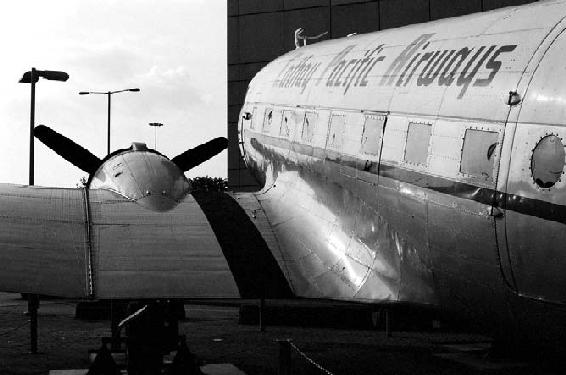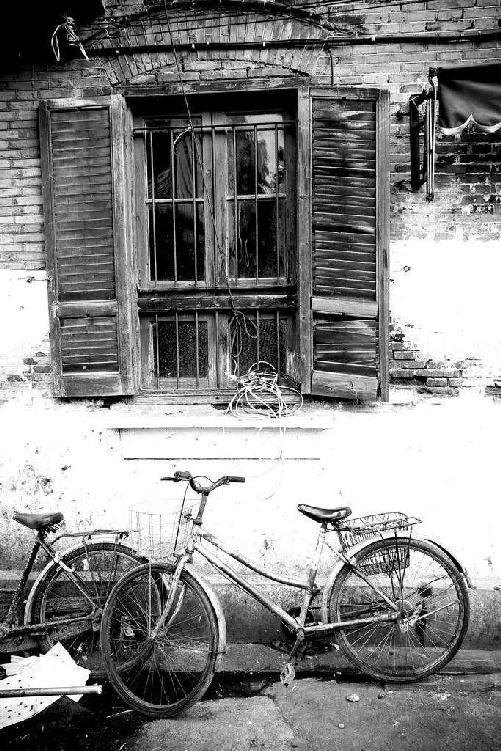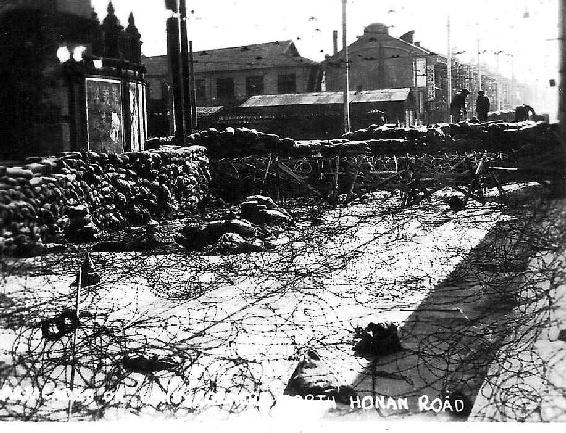Shanghai is the largest city by population in the People's Republic of China (PRC) and the largest city proper by population in the world. It is one of the four province-level municipalities of the PRC, with a total population of over 23 million as of 2010. It is a global city with influence in commerce, culture, finance, media, fashion, technology and transport. It is a major financial center and the busiest container port in the world.
上海按人口来说,是中国最大的城市,而且是世界上人口最多的城市。它是中国4个省级直辖市之一,2010年时人口超过2300万。上海是一个国际都市,在商业、文化、金融、传媒、时尚、技术和交通领域都有影响力。它是世界上主要金融中心之一,也是世界上最繁忙的集装箱港口。
The two Chinese characters in the city's name are“上”(Shàng-"above")and“海”(hǎi-"sea"), together meaning "upon-the-Sea". The earliest occurrence of this name dates from the 11th century Song Dynasty when there was already a river confluence and a town with this name in the area. There are disputes as to how the name should be interpreted, but Chinese historians have concluded that Shanghai was literally on the sea during the Tang Dynasty, hence it is the origin of the name.

城市名字的这两个汉字“上”(上—上面)和“海”(海—海洋),放在一起意思就是“海上”。这个名字可以追溯到11世纪的宋朝,在那个时候那里已经有一处河流汇合点,那里有个小城就叫这个名字。关于这个名字的翻译是有争议的,但是中国历史学家总结说,唐朝时上海字面意思就指的是在海上,因此这就是其名字的起源。

During the Song Dynasty (AD 960-1279), Shanghai was upgraded in status from a village to a market town in 1074, and in 1172 a sea wall was built to stabilize the ocean coastline. From the Yuan Dynasty in 1292 until Shanghai officially became a city in 1927, the area was designated merely as a county seat administered by the Songjiang prefecture.
宋朝期间(公元960—1279)1074年上海从小镇升级为集镇,在1172年修筑了一个海堤以加固海岸线。从元朝1292年起,到1927年上海正式成为一个城市,这里曾为松江县的县政府所在地。
During the Qing Dynasty, Shanghai became one of the most important sea ports in the Yangtze Delta region. International attention to Shanghai grew in the 19th century due to European recognition of its economic and trade potential at the Yangtze River. During the First Opium War (1840-1842), British forces occupied the city. The war ended with the 1842 Treaty of Nanjing, which allowed the British to dictate opening the treaty ports, Shanghai included, for international trade. The Treaty of the Bogue signed in 1843, and the Sino-American Treaty of Wanghia signed in 1844 forced Chinese concession to European and American desires for visitation and trade on Chinese soil.
清朝时期,上海成为长三角地区最重要的海港之一。19世纪,因认识到上海在长三角地区的经济和贸易潜力,上海受到国际瞩目。第一次鸦片战争时(1840—1842),英国军队占领了上海。战争于1842以签订《南京条约》告终,该条约允许英国开设包括上海在内的国际通商口岸。1843年签订《虎门条约》,1844年签订《中美望厦条约》,强制中国允许欧洲和美国来华访问以及在中国领土上进行贸易。
The Sino-Japanese War concluded with the Treaty of Shimonoseki, which elevated Japan to become another foreign power in Shanghai. Japan built the first factories in Shanghai, which were soon copied by other foreign powers. Shanghai was then the most important financial center in the Far East.
中日战争以签署《马关条约》告终,这使日本成为上海的另一个外国势力。日本在上海建造了第一家工厂,很快被别国势力所模仿。上海那时候是远东地区最重要的金融中心。

On 27 May 1949, the People's Liberation Army took control of Shanghai, which was one of only three municipalities of former Republic of China (ROC) not merged into neighboring provinces over the next decade (the others were Beijing and Tianjin).
1949年5月27日,中国人民解放军进驻上海,上海是三个民国政府直辖市中,唯一在之后十年间没有并入周边省份的城市(其他两个是北京和天津)。
Shanghai initiated economic reforms in 1991, starting the massive development still seen today and the birth of Lujiazui in Pudong.
上海于1991年开始经济改革,大规模发展至今,形成浦东的陆家嘴。
1. proper [ˈprɔpə] adj. 适当的;本身的
例 Two out of five people lack a proper job.
五分之二的人缺乏一份像样的工作。
2. municipality [mjuːˌnisiˈpæliti] n. 市民;市政当局;自治市
例 The Beijing municipality announced last month that colleges would soon be adding courses in how to handle pressure, relations and mental health.
上个月北京政府宣称,大学很快会增加关于如何处理压力、各种关系和心理健康等的课程。
3. commerce [ˈkɔmə(ː)s] n. 商业,贸易
例 They have made their fortunes from industry and commerce.
他们从工商业中发了财。
4. container [kənˈteinə] n. 集装箱;容器
例 The train, carrying loaded containers on flatcars, was 1.2 miles long.
那列在平车上装载着集装箱的火车长1.2英里。
5. character [ˈkæriktə] n. 性格;字符
例 Perhaps there is a negative side to his character that you haven't seen yet.
或许他性格中有你还未看到的消极一面。
6. occurrence [əˈkʌrəns] n. 发生;出现;事件
例 The greatest occurrence of coronary heart disease is among those over 65.
冠心病的最高发病率在65岁以上的人群中。
7. confluence [ˈkɔnfluəns] n.(河流的)汇合;汇合点
例 The 160-metre falls mark the dramatic confluence of the rivers Nera and Velino.
这处160米的瀑布标志着维拉河和维里诺河壮观的汇合。
8. dispute [disˈpjuːt] n. 辩论;争吵
例 They have won previous pay disputes with the government.
他们曾赢过几起与政府的工资纠纷。
9. upgrade [ˈʌpgreid] v. 使升级;提升
例 Medical facilities are being reorganized and upgraded.
医疗设施正在进行重组和升级。
10. stabilize [ˈsteibilaiz] v. 使稳固
例 Although her illness is serious, her condition is beginning to stabilize.
虽然她的病情很严重,但她的情况正开始稳定下来。
11. coastline [ˈkəustlain] n. 海岸线
例 This is the most exposed coastline in the world.
这是世界上最无遮蔽的海岸线。
12. prefecture [ˈpriːfektjuə,ˈpriːfektʃuə] n. 县;辖区
例 He was born in Yamagata prefecture, north of Tokyo.
他出生于东京以北的山形县。
13. delta [ˈdeltə] n.(河流的)三角洲
例 Yangtze River Delta is an economic region in China.
长江三角洲是中国的经济区。
14. treaty [ˈtriːti] n. 条约
例 Fourth, there's generally some arrangement, either for the publication of the treaty, or its deposition, its safe-keeping in some sort of shrine.
第四,通常对条约进行处理时,要么公开进行,要么放在圣坛里安全保存。
15. elevate [ˈeliveit] v. 提升
例 Emotional stress can elevate blood pressure.
情绪紧张会使血压升高。
16. power [ˈpauə] n. 政权;势力
例 He first assumed power in 1970.
他于1970年首次执掌了政权。
A: How was your trip from Tokyo to Shanghai?
从东京来上海这一路怎么样?
B: Nothing bad. I am just a little bit tired.
还好,就是有点累了。
A: Have you been in Shanghai? And what do you know about Shanghai?
你来过上海吗?你都了解上海什么?
B: I heard Shanghai is the financial center of China. Is that so?
我听说上海是中国的金融中心,是这样吗?
A: Yes. That is true.
是的,没错。
B: Where are we heading now?
我们现在去哪?
A: We are going to your hotel. You'd better have a good rest first before our sightseeing in Shanghai.
去你的宾馆。你最好在我们游上海之前,先好好休息一下。
上海,简称“沪”,又称“申”。大约在六千年前,现在的上海西部即已成陆地,东部地区变成陆地也变有两千年之久。相传春秋战国(the Spring and Autumn period and Warring State period)时期,上海曾经是楚国春申君黄歇的封邑,故上海又称为“申”。公元四、五世纪时的晋朝(Jin Dynasty),松江(现名苏州河)和滨海一带的居民多以捕鱼为生,他们发明了一种竹编的捕鱼工具(fishing tool)叫“扈”,又因为当时江流入海处称“渎”,因此,松江下游一带被称为“扈渎”,以后又改“扈”为“沪”。


免责声明:以上内容源自网络,版权归原作者所有,如有侵犯您的原创版权请告知,我们将尽快删除相关内容。










![《辞海》[改革开放]条的设置及变迁](https://file.guayunfan.com/2020/zb_users/upload/2020/09/14.jpg)





